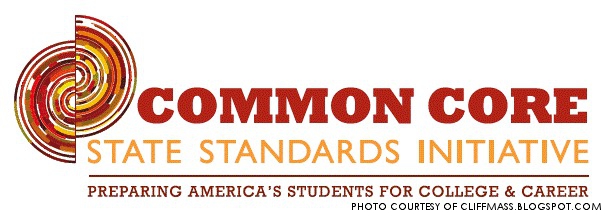
Over the course of thirteen years, from kindergarten through senior year, students are expected to learn a monstrous amount of information. This information is divided into curriculums, which are further divided into different classes.
Common Core is a list of standards compiled by the National Governors Association Center for Best Practices and the Council of Chief State School Officers that police these curriculums and control what students are expected to learn, as well as lets parents and teachers know the best ways to help their students.
Common Core is divided into two parts, one for K-12 and one for college and career preparedness. The K-12 section is further divided into two sections for English and mathematics. English covers key points relating to reading, writing, speaking and listening, language, media and technology. Mathematics includes key points that differ depending on the level of education the student is currently taking.
Grades K-5 provides a solid foundation including the four basic functions, fractions and decimals. Grades 6-8 use this foundation to cover algebra, geometry, probability and statistics. Finally, 9-12 applies all of the math skills the student has learned to solve problems and prepare the students for college or a career.
The standards were informed by the best of the former state standards, employees in education and public feedback. The movement for these standards was led by the states and was launched by many state leaders including governors and education commissioners from 48 states, two territories and D.C. Common Core also has many endorsing partners, including Adobe and CollegeBoard.
There are also some common myths associated with Common Core. One of these is that adopting a common set of standards across the states will lower the high standards of some states. However, the standards are made so that every state, no matter how bad or good, can become better. Also, an agreement has been made between the states and Common Core that no state will lower their standards, so states should only go up.
Another myth is that Common Core will make English teachers teach students about science and social studies materials. Actually, the standards will require other teachers to also include reading and writing in their curriculums, as well as making English teachers teach non-fiction. Finally, there is another myth that the standards will not prepare or require students to take algebra in eighth grade. However, the standards include all of the prerequisites for algebra 1 in grades K-7, meaning that students who master this material will have no trouble taking algebra 1 in 8th grade.
Common Core standards are widespread as well, as every one of the 48 contiguous states has adopted the standards, except for Texas, Virginia, Minnesota and Nebraska. These standards aim to ensure that all students, no matter where they live, are prepared for postsecondary education or to join the workforce. Of course, these standards are not the only things needed for students to succeed, but they make a map that can be followed to success by students, parents and teachers.

Leave a Reply